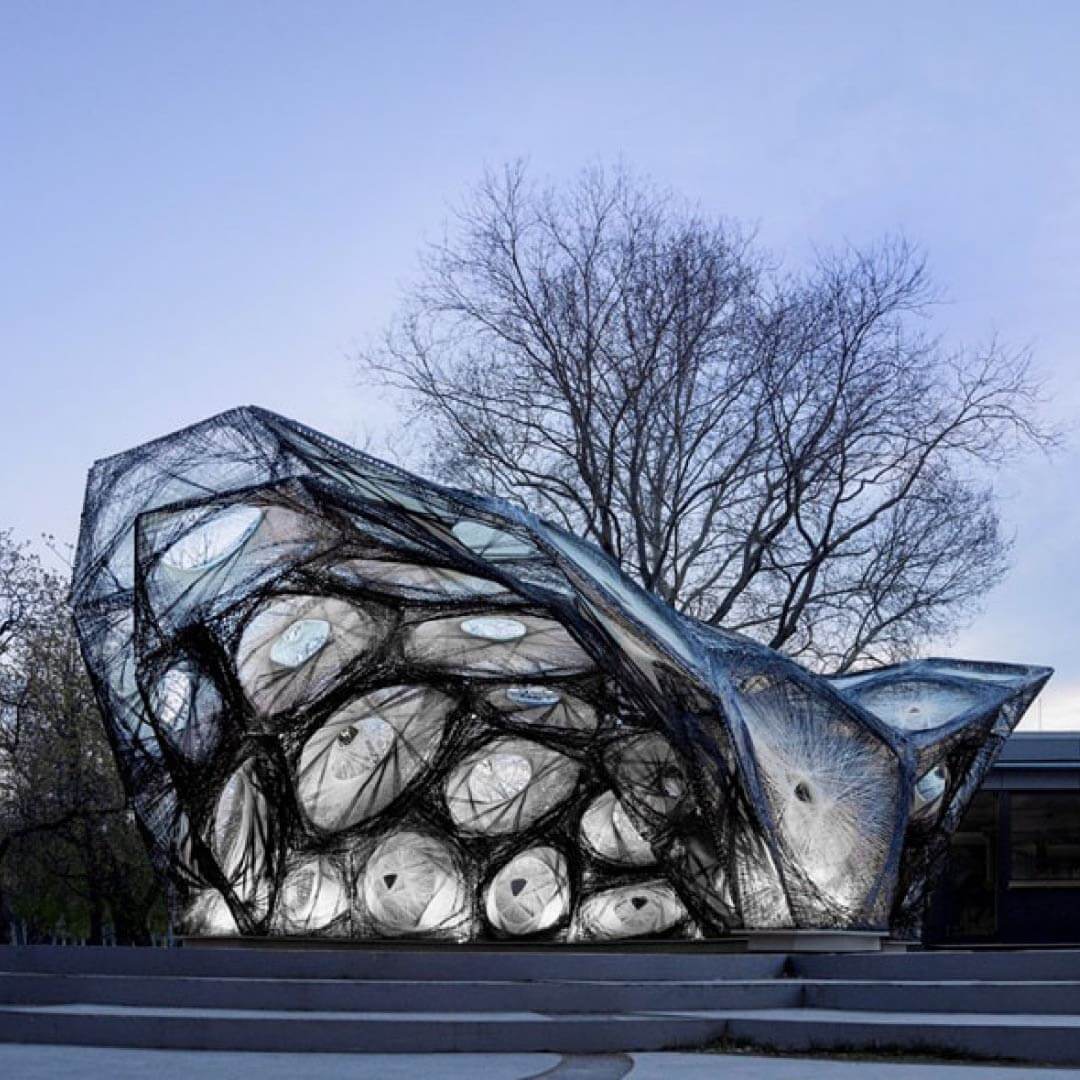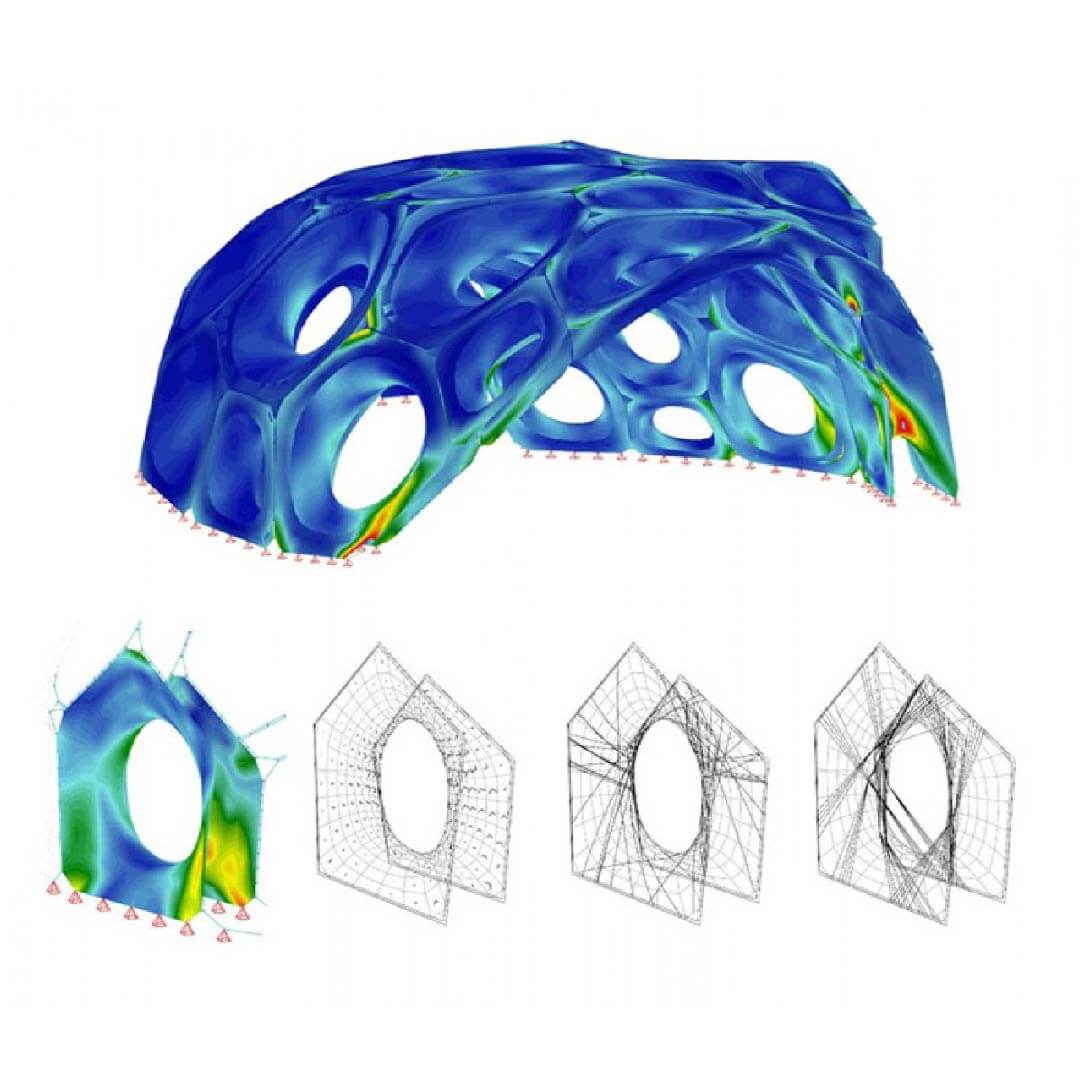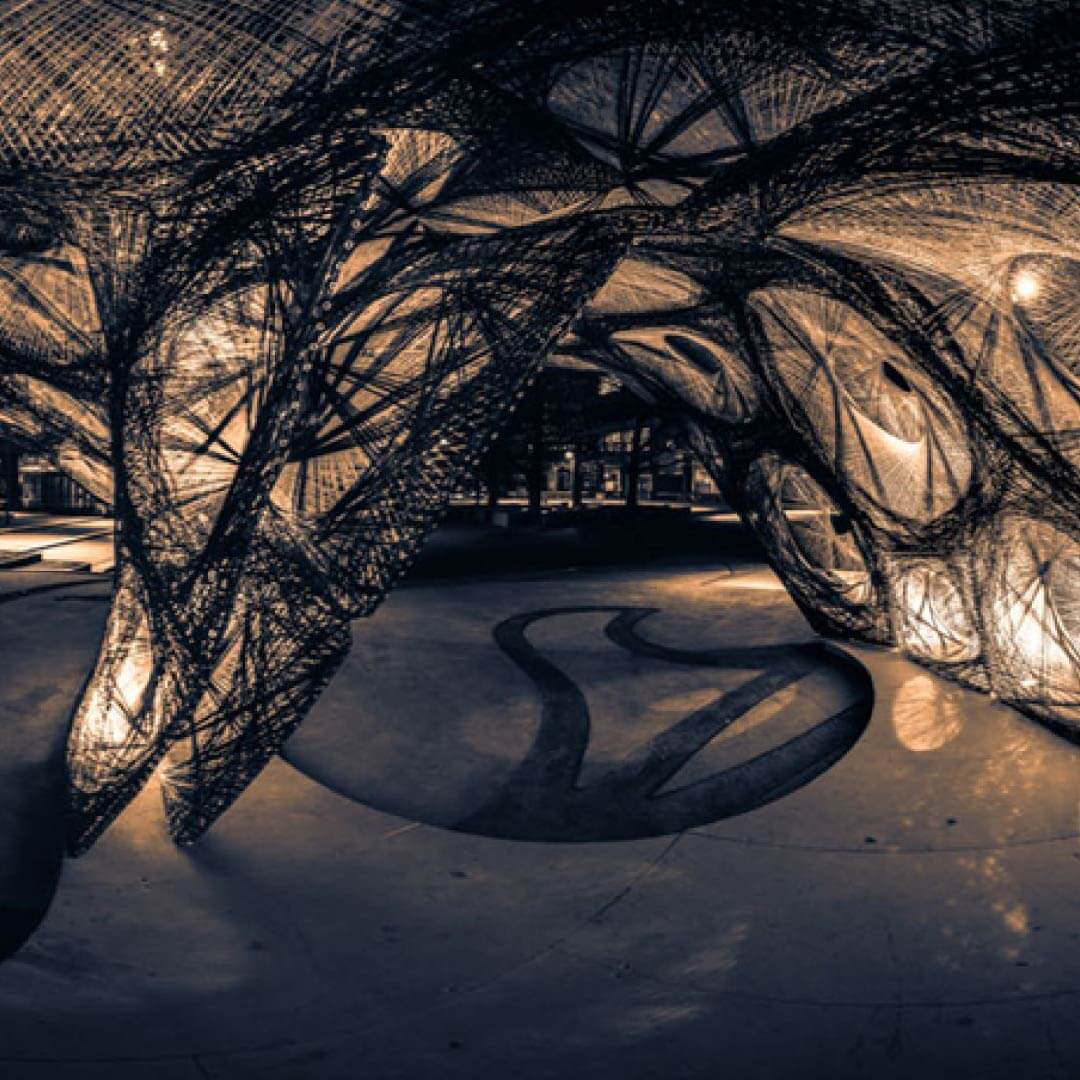
Parametric Design furniture
Michaela Crie Stone lives and works in Rockport, Maine, where she creates pieces that push the parameters of function by blurring the lines between art, craft, and design.

Biomimetic architecture is a multi-disciplinary scientific approach to sustainable design that goes beyond using nature as inspiration for aesthetics but rather deeply studying and applying construction principles that are found in natural environments and species.

[1]
Biomimicry is a new science that studies nature’s models and then emulates these forms, processes, systems, and strategies to solve human problems – sustainably.
 Biomimicry in architecture and manufacturing is the practice of designing buildings and products that simulate or co-opt processes that occur in nature.
Biomimicry in architecture and manufacturing is the practice of designing buildings and products that simulate or co-opt processes that occur in nature.
There are ultrastrong synthetic spider silks, adhesives modeled after gecko feet, and wind-turbine blades that mimic whale fins.
 “The way biological systems solve problems is pretty different from the way engineered systems solve problems,” says Peter Niewiarowski, biologist at the University of Akron and its Biomimicry Research and Innovation Center.
“The way biological systems solve problems is pretty different from the way engineered systems solve problems,” says Peter Niewiarowski, biologist at the University of Akron and its Biomimicry Research and Innovation Center.
 Human-designed solutions, he says, are crude and additive. They rely on using more materials or energy to accelerate reactions—both costly expenditures. Natural processes rely on unique geometry and material properties.
Human-designed solutions, he says, are crude and additive. They rely on using more materials or energy to accelerate reactions—both costly expenditures. Natural processes rely on unique geometry and material properties.

[2]
Biomimicry refers to innovations inspired by nature as one which studies nature and then imitates or takes inspiration from its designs and processes to solve human problems.
Living beings have adapted to a constantly changing environment during evolution through mutation, recombination, and selection.
 The core idea of the biomimetic philosophy is that nature’s inhabitants including animals, plants, and microbes have the most experience in solving problems and have already found the most appropriate ways to last on planet Earth.
The core idea of the biomimetic philosophy is that nature’s inhabitants including animals, plants, and microbes have the most experience in solving problems and have already found the most appropriate ways to last on planet Earth.
Similarly, biomimetic architecture seeks solutions for building sustainability present in nature, not only by replicating their natural forms, but also by understanding the rules governing those forms.

[3]
Text Source: What is Biomimetic Architecture? / archdaily
Nature Does It Better: Biomimicry in Architecture and Engineering / autodesk
Biomimetic architecture / wikipedia
Video Source:
ICD ITKE Research Pavilion 14-15 / Youtube / Rhino Grasshopper
BUGA Fibre Pavilion, Bundesgartenschau Heilbronn 2019 / Youtube/ Universität Stuttgart
Elytra Filament Pavilion / Youtube/ Victoria and Albert Museum
ICD/ITKE Research Pavilion 2016/2017 – Stuttgart University / Youtube/ Genius Loci Architettura
Biennale Architettura 2021 – Achim Menges and Jan Knippers / Youtube/ BiennaleChannel
RMIT Knitting Robotic Fabrication / Youtube/ Yousheng Chen
ICD-ITKE – PAVILION 2012 / Youtube / Mohamad Fouad Hanifa
ICD_ITKE Research Pavilion 2012- Production footage/ Youtube / amymymmy1688
Zaha Hadid Architects and ETH Zurich develop knitted concrete system / Youtube/ Dezeen
The Eden Project / Youtube/ Grimshaw Architects
https://www.youtube.com/watch?v=wuOjoU27wx4
Image Source:
[1]- SOURCE: https://www.archdaily.com/954004/what-is-biomimetic-architecture
https://images.adsttc.com/media/images/5fbe/a385/63c0/17d6/2c00/0d4b/slideshow/03_V_A_Elytra_Filament_Pavilion_5_(c)_NAARO_-_Copia.jpg?1606329213
[2]- SOURCE:ICD ITKE Research Pavilion 2013-14. Photographs by ICD/ITKE University Stuttgart
https://www.metalocus.es/sites/default/files/styles/mopis_news_carousel_item_desktop/public/file-images/pabellon_aleman_folie_24_1400.jpg?itok=I5atfgEV
https://www.metalocus.es/sites/default/files/styles/mopis_news_carousel_item_desktop/public/file-images/pabellon_aleman_folie_11_800.jpg?itok=lYLf3Tbf
https://www.metalocus.es/sites/default/files/styles/mopis_news_carousel_item_desktop/public/file-images/pabellon_aleman_folie_31_800.jpg?itok=4ctEMwDy
https://www.metalocus.es/sites/default/files/styles/mopis_news_carousel_item_desktop/public/file-images/pabellon_aleman_folie_32_800.jpg?itok=27u_GiPr
[3]- SOURCE:http://rolandhalbe.eu
http://3.bp.blogspot.com/-trGBjUSotnc/UYjKrEaHA4I/AAAAAAAAgGM/YmLSL5kqV-Y/s1600/Research+Pavilion+2012+by+ICD-ITKE09.jpg
http://3.bp.blogspot.com/-5ezjYqIPeCo/UYjKvhdGwYI/AAAAAAAAgGU/RL9lPnAaKIQ/s1600/Research+Pavilion+2012+by+ICD-ITKE10.jpg

Michaela Crie Stone lives and works in Rockport, Maine, where she creates pieces that push the parameters of function by blurring the lines between art, craft, and design.

in this video, you can look at different parametric towers with parametric designs.

Drone based technology is the solution to overcome the limitation of surface road capacity in cities.

Augmented reality (AR) is the integration of digital information with the user’s environment in real-time.
Parametric Ideas for Architects @2025